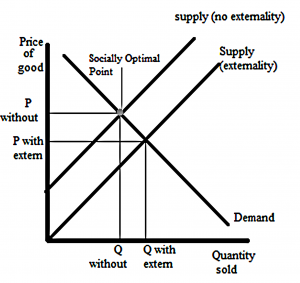Most people would agree that climate change is a major issue in today’s world that requires immediate action. One of the most prominent proposals is “Cap and Trade,” also known as emission permits.
Cap and Trade is a system where the government auctions off or grants a limited number of permits to polluting companies. These permits give the company the right to discharge a certain amount of a pollutant, forcing companies to obtain enough permits to cover their pollution.
While the Democrats tend to support Cap and Trade programs, arguing that it is an effective way to reduce pollutants at the lowest cost, several groups oppose it.

Foremost amongst these groups are Republicans, many of whom claim that such a program would cause large increases in costs, and that this is not worth the reduction in pollution.
This debate often gets heated and ideological, focusing on issues not related to the validity of Cap and Trade. The question remains, is Cap and Trade a good system, or are the Republicans right that the cost is too high?
Central to understanding this debate is grasping the underlying economics of Cap and Trade. The problem that Cap and Trade claims to fix is a negative externality. This means that the full cost of production is not paid by the producer; some of it is borne by a third party who was not involved in the transaction.
For example, if a company dumps toxic sludge into a river, which makes people downstream ill, the company does not bear all costs of production: it doesn’t have to pay for the people’s medical bills.
Because the company (and consumers) are not paying the full price, they have an incentive to produce more at a cheaper price than they would if they were forced to pay the full cost.
There are many theoretical solutions to fix an externality like pollution. Strict limits on pollution means just that, and a tax simply taxes excessive pollution. Of these, cap and trade is the best option, mainly because it encourages cuts where they are cheapest.
Due to the pollution permits in a Cap and Trade system, a company that can cheaply reduce its pollution will do so, whereas companies where reduction is expensive will buy permits because it the cheaper option. Thus the reduction in emissions will take place where it is cheapest to do so, resulting in a smaller cost for the same amount of pollution cut. Additionally, Cap and Trade gives an extra incentive for companies to develop cleaner production methods, as it increases their profit by being able to sell more permits or buy fewer.
In more practical terms, Cap and Trade program’s track record is good, with many countries having carbon markets. There is even a U.S. Sulfur emissions permit market, which has proven very successful. There has been a 50% reduction in Sulfur Dioxide emissions between 1980 and 2007 and is estimated to have been 80% cheaper than a similar reduction produced by fixed limits.
From this examination of the economics behind Cap and Trade and its proven history, it seems fairly clear that the Democrats are right on this issue. But what of the Republican’s claim about the costs? It is not necessarily the case that Cap and Trade will dramatically increase costs. A study by the EPA found that the difference in GDP caused by a Cap and Trade system over a 40 year period to be small.
Also, it might not be a bad thing if costs increased, as the companies and consumers are not paying for the full cost of production, by increasing the cost it forces the companies to pay the full cost of production (or internalize the externality), which will reduce demand and supply to its optimal levels.
The Republican’s often claim to be the party of free market economics. Hopefully they will apply these principles to areas outside of tax cuts.